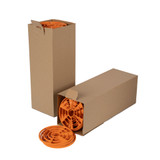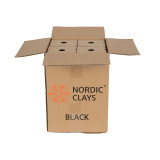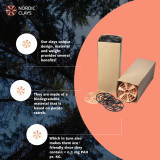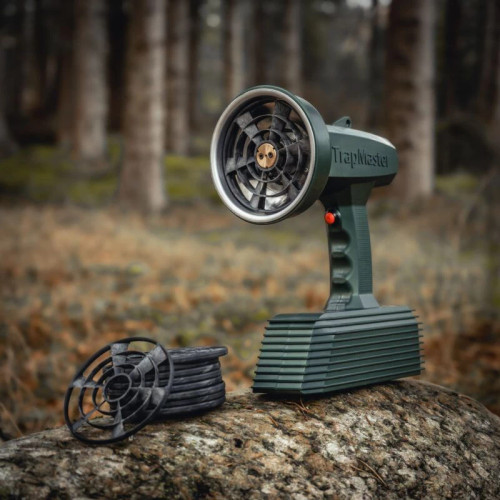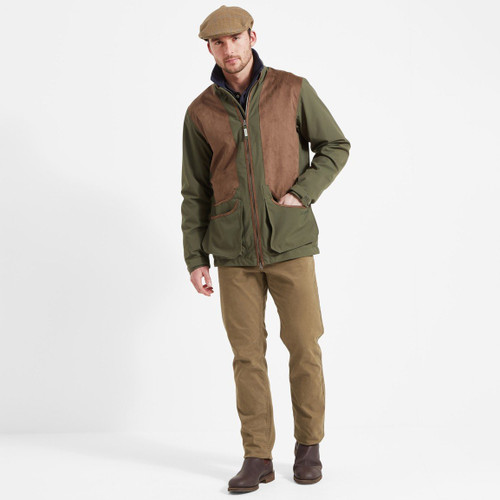Description
The clay targets are perfect for the shooter, who would like to practice his shooting technique anywhere anytime.
By only weighing 23 g (0.81 oz) per clay pigeon, the pigeons are light and flexible to transport, when you want to practice your shooting technique. Compared to the traditional clay pigeons, the environmentally-friendly pigeons provide a very lifelike and challenging escape. The pigeons are easy to see on their flight in the sky and splinter clearly when hit.
The clay pigeons do not only differ by their significant lower weight, but they are also made of a biodegradable material, which means they live up to the increasing demands for sustainability and environmental considerations. Basically this means that you don’t have to pick up the pieces from the clay pigeons, which over time will dissolve in nature. It is expected that the clays will dissolve in nature after 6 years.
With our clay pigeons, you have the possibility to practice your shooting techniques in nature, without worrying about the consequences the pigeons have for nature. In addition the pigeons can challenge your shooting techniques in a different way, than the traditional pigeons, since their design and low weight makes them more lively.
To launch our Bio-Clays+ you can use our TrapMaster, which is our handheld and flexible clay thrower.
You can read more about the TrapMaster here.
NOTE: Our BIO-CLAYS+ clay pigeons, will only work with the TrapMaster.
WHY BIO-CLAYS+?
- The clay pigeons flight path is true to nature and authentic.
- No cleanup after a training session.
- They are eco-friendly, since they contain less than 0.2 mg PAH pr. kg. (Read more under the tab “Documentation”)
- They are made of a biodegradable material and are expected to dissolve in nature after 6 years.
- Most traditional clay pigeons do not biodegrade.
- The clay pigeons only weigh 21% of the traditional pigeons and takes up less “space” in nature.
- During transport of our Bio-Clays+, CO2 emissions are up to 4.7 times lower compared to the traditional clay pigeons of 110g.
- We can ship up to 75% more clay targets on a regular EU-pallet, compared to the traditional 110 g clay pigeon. (14400 versus 8250 clay pigeons.)
SPECIFICATIONS
- Dimensions of our Bio-Clays+
- Diameter: 11 cm
- Thickness: 0.6 cm
- Weight: 23 gram (0.81 oz)
- Content of the package: 200 clays (4 stacks of 50)
- Dimensions of the package: 25 x 25 x 35 cm
- Weight: 5.3 kg (11.7 pounds)
DOCUMENTATION
What material is our Bio-Clays+ made of?
Our Bio-Clays+ are made of a biodegradable granulate based on reclaimed potato, grain, root and seed flour based resources. (Also referred to as starch) In addition, 2% dye is added to the granulate to get the desired color.
Why is our Bio-Clays+ eco-friendly?
Below you can see our newest test report of our Bio-Clays+ / Bio-Clays 3.0, where we have tested the PAH-content of our clays, to make sure they live up to the governments strict environmental regulations. PAH (polycyclic aromatic hydrocarbons) is a group of hydrocarbons, which poses a possible health and pollution problem that can have a negative impact on soil, wildlife, groundwater and surface water.
Click here to see our PAH test report.
Our Bio-Clays+ contain less than 0,2 mg PAH pr. kg. Therefore they fulfill the current environmental requirements, and they are future-proof against possible, future tightening of these requirements.
To compare with the current regulations in Denmark, as an example we looked at “Skydebane Vest” in Hedehusene which requirement is: “Content of PAH (polycyclic aromatic hydrocarbons) in the used clay pigeons can not exceed 10 mg/kg.”
You can find their environmental approval, together with the rest of Denmark’s shooting ranges by clicking here.
STORAGE
-
- Since the material is biodegradable it is crucial that our Bio-Clays+ are stored below 55 degrees Celsius/130 degrees Fahrenheit and at a dry location.
- Do not store them in direct sunlight at higher temperatures than 45 degrees Celsius/113 degrees Fahrenheit.
- Do NOT leave the Bio-Clays+ in a vehicle etc. on a warm day (+25 degrees celcius/77 degrees Fahrenheit), a vehicle (dependent on color etc.) can within 1-2 hours become twice as hot as the temperature outside.

